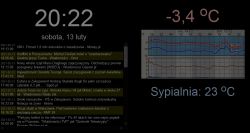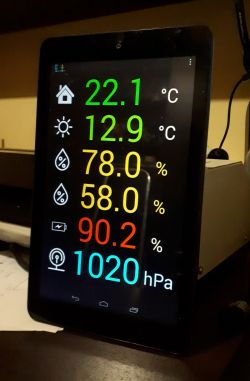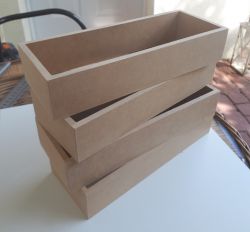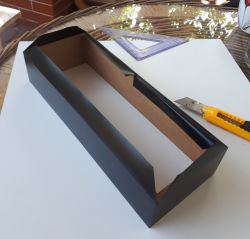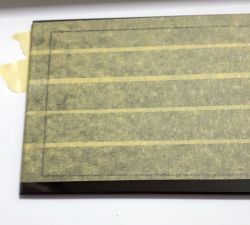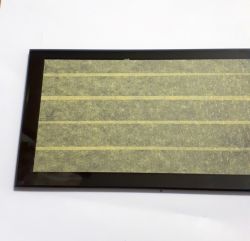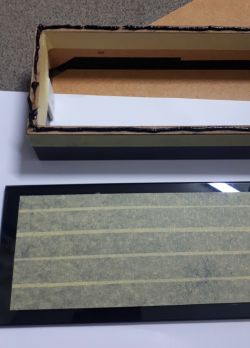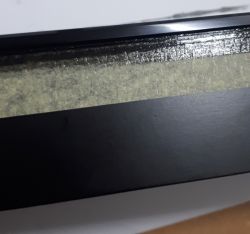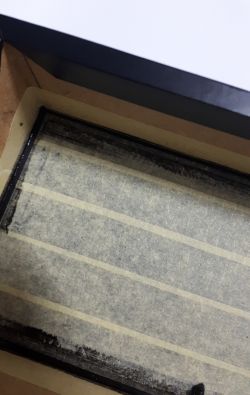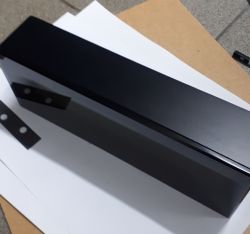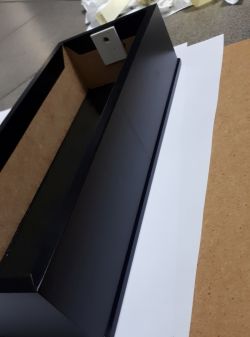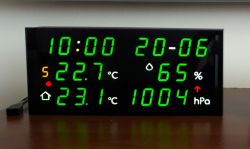
The title picture is probably a bit familiar from my previous topic about pictograms.
Today the device is ready. Generally available weather stations have one thing in common - the LCD display. It has its advantages and disadvantages. When it comes to the readability of these panels, it is different. So I decided to build a station using seven-segment LED displays. The height of the figures in the design is 2.5 cm. Visibility is excellent from a distance of several meters in the dark as well as in bright rooms and at large viewing angles.
The front dimensions of the device are 27.5 x 12.5 cm.
The panel displays the current time, day of the month, month, temperatures from modules 2 to 9, "home" temperature, humidity, atmospheric pressure, temperature and pressure trend arrows. As well as alarm icons - lack of communication with the module, low battery status of the module and others.
I made several such stations in different versions, for family and friends. Also versions without clock and calendar. Pictures below.
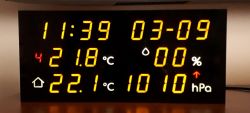
The device is fully configurable. You can set the number of sensors, the action of measurement tendency arrows, panel brightness, time of automatic switching of measurements, etc.
The transmission interval can be set in the measuring modules.
Device Description.
The time and date are downloaded from the Internet from publicly available NTP servers. The time is updated in full hours.
Support for up to 9 measurement modules (temperature and humidity measurement).
Switching the module number on the display is done using the IR remote control.
The station remembers 4 orders of any pilot. These can be, for example, unused buttons on the remote control of our home equipment. They can also be single buttons from 4 remote controls. The RC5 and RC6 remote controls are not suitable for this. Although stubborn, it is possible to expand the software to support them.
Pilot commands:
1 - switching measurements down
2 - switching measurements up
3 - automatic switching (time set in station configuration)
4 - display blanking.
As the LED displays glow quite strongly in the dark, I used brightness adjustment depending on the ambient light. This adjustment is configurable according to your preferences. Two brightness points are set. Contractual minimum and maximum. Display brightness is set to minimum in low ambient light. Similarly, in bright light, the maximum brightness is set. The device remembers the brightness of the environment and the level of illumination of the display. The entire range of brightness changes in 30 levels. The brightness of the display changes exponentially. To the eye, such changes are more linear.
The station is powered by a 12V 1.5A plug power supply. Power consumption depends on the brightness of the display and ranges from 1 to 5W.
Measurement module.
The ESP12 module is responsible for radio communication between the module and the station. (ESP8266).
I used the Espressif ESP-Now protocol for data transmission. It allows you to send data quickly. Waking up the system, sending the measurements and going to sleep again takes about 0.3 seconds. During sleep, the power consumption is between 30 and 100 uA. This value depends on the quality of the used LDO stabilizer and other modules. I used the DS18B20 as the temperature sensor, and the HTU21D as the humidity sensor. The whole is powered by one 18650 cell. When sending measurements every minute, the battery with a capacity of 2000 mAh is sufficient for approx. 6 to 7 months of operation. In subzero temperatures, this time is shorter. (I did the tests without the LDO stabilizer). It should be better with the stabilizer.
Configuration of measuring stations and modules is done via a web browser.
The pictures show the configuration of the station and sensor modules. Regardless of displaying the measurements on the panel, it is possible to view all the measurements on the local website. Its address (IP) is available on the configuration page, after proper connection to the wifi network.
settings

screen shot of the phone
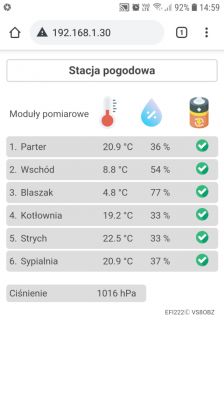
In case of problems with the radio range from the modules to the stations over longer distances, I developed something like a repeater. It significantly increases the range.
The station housing is made of 6mm MDF board with tinted glass on the front. Black Antisol, 6mm thick. MDF is covered with a black matt veneer. The rear wall is cut from black polystyrene with a thickness of 1mm.
A description of the action.
As I wrote above, the measurement modules send data from sensors to the station using the Esp-Now protocol. The ESP8266 receiver receives this data and sends via UART to the Atmega64. It also generates the station configuration website and the measurement website.
Atmega64 deals with displaying data on LED displays, calculating the trend of measurement data, enabling alarms, etc. The IR receiver is connected to the Atmega8, which sends processed data from the remote control to Atmega64 via 4 data lines.
Alarms:
Alarm for lack of connection between the module and the station. The wifi icon is on. The panel automatically selects the number of the module that has no connection and the pictogram "C" blinks next to the temperature digits.
Low battery voltage alarm. It starts below 3.3 V. The battery icon is on and the number of the module with the discharged battery is selected. Pictogram "C" flashes next to the temperature digits. If the voltage drops below 3V, the module falls asleep "forever"
The software is written in the Arduino Ide environment and is a set of codes available on the Internet and own. I am not a professional programmer, so I am asking for the understanding of the professionals, but I would love to hear your comments about the sources.
Pictures do not reflect the actual appearance. It is difficult to photograph glowing LEDs.
And that's it, in a nutshell
I attach manuals and sources with diagrams.
The display board. One-sided. Unfortunately, you need to do about 150 guides on it.
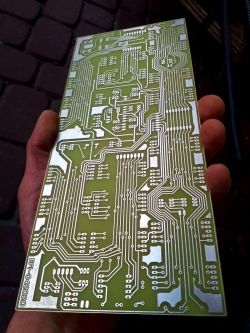
Atmega64 board and drivers
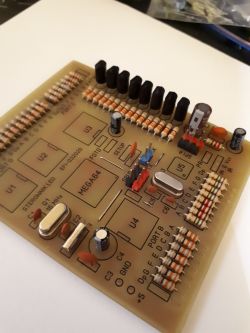
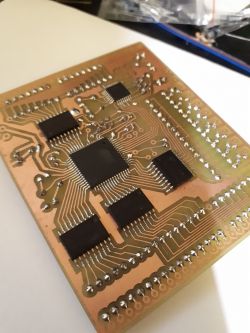
power supply and receiver boards

pictogram covers
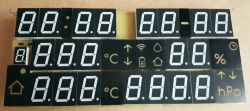
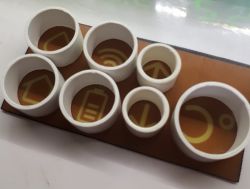
measuring module
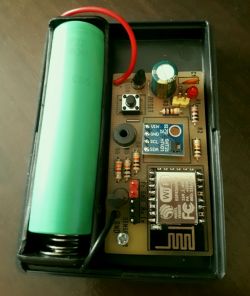
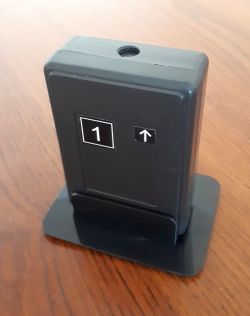
"repeater"
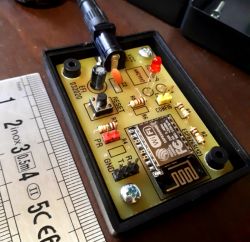
general view of the station
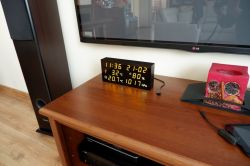
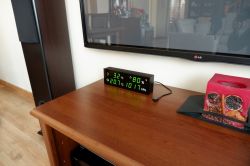
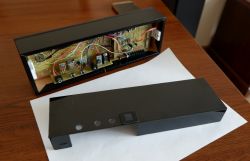
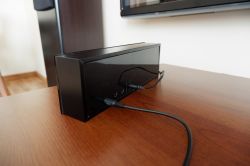
I added the missing two softs to the Atmega64 and the IR receiver
Cool? Ranking DIY




